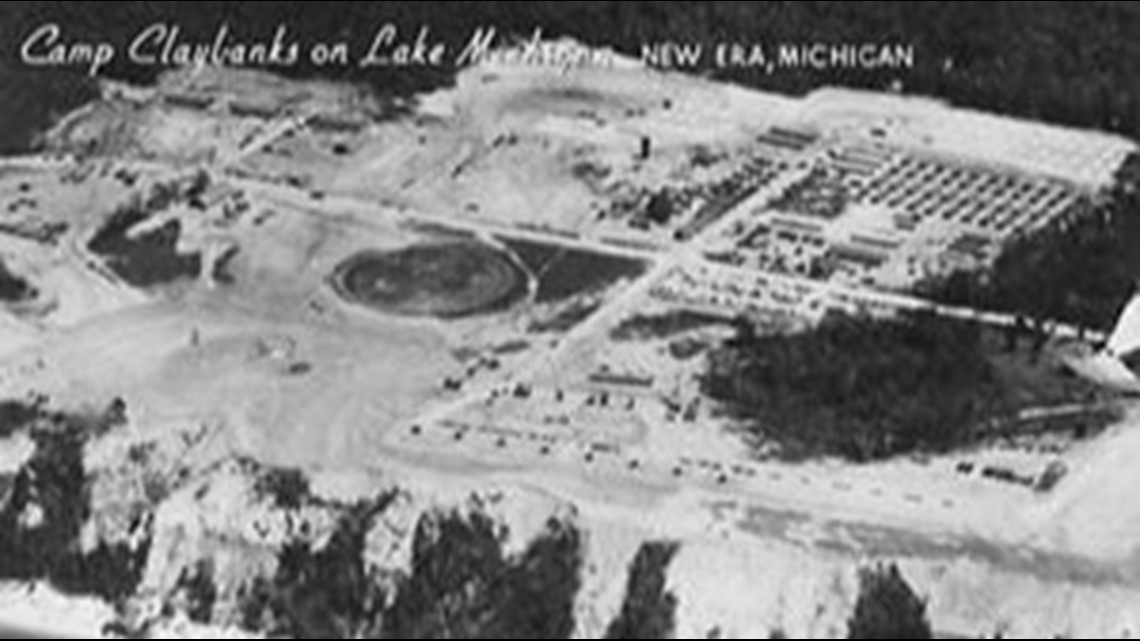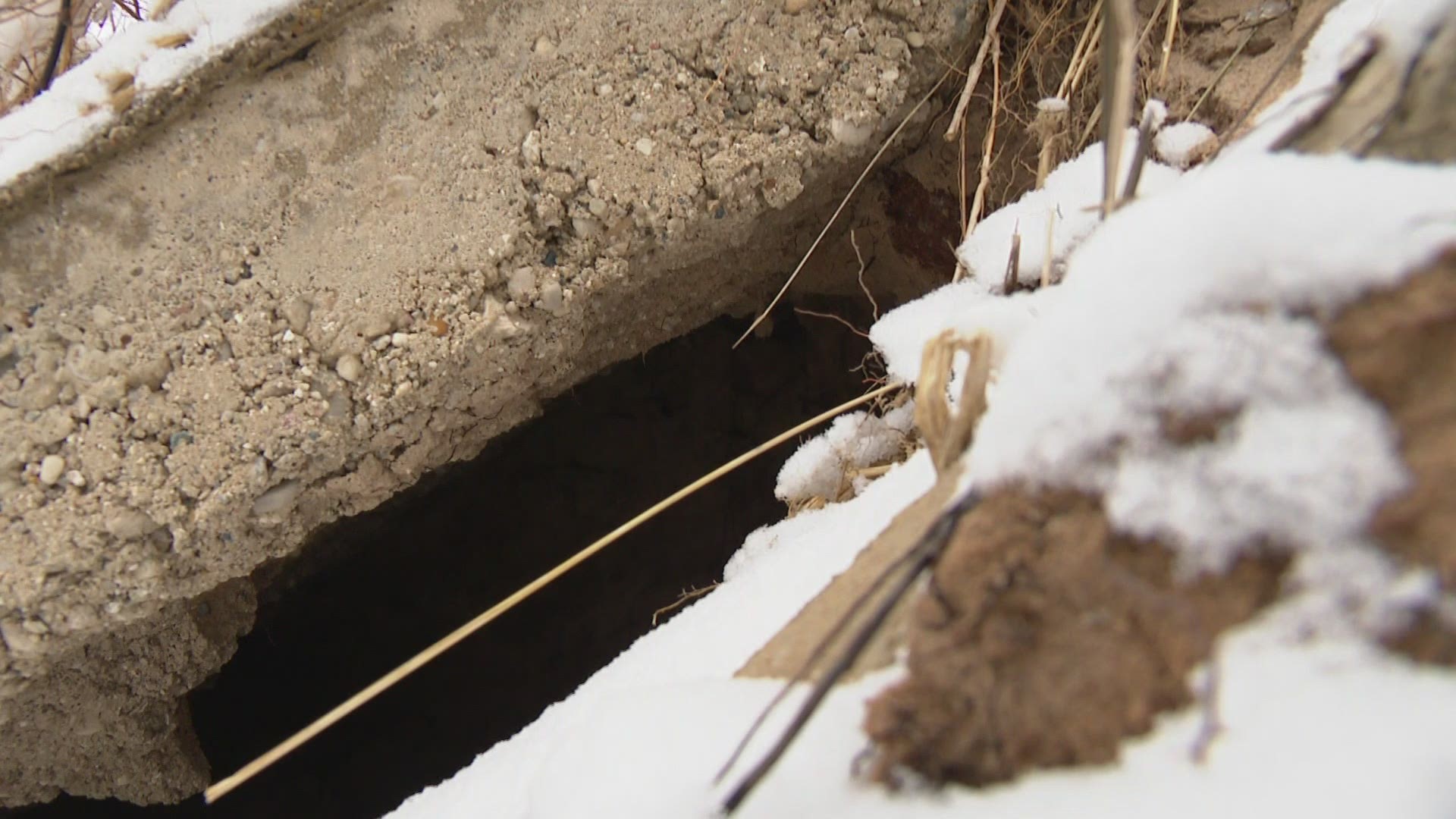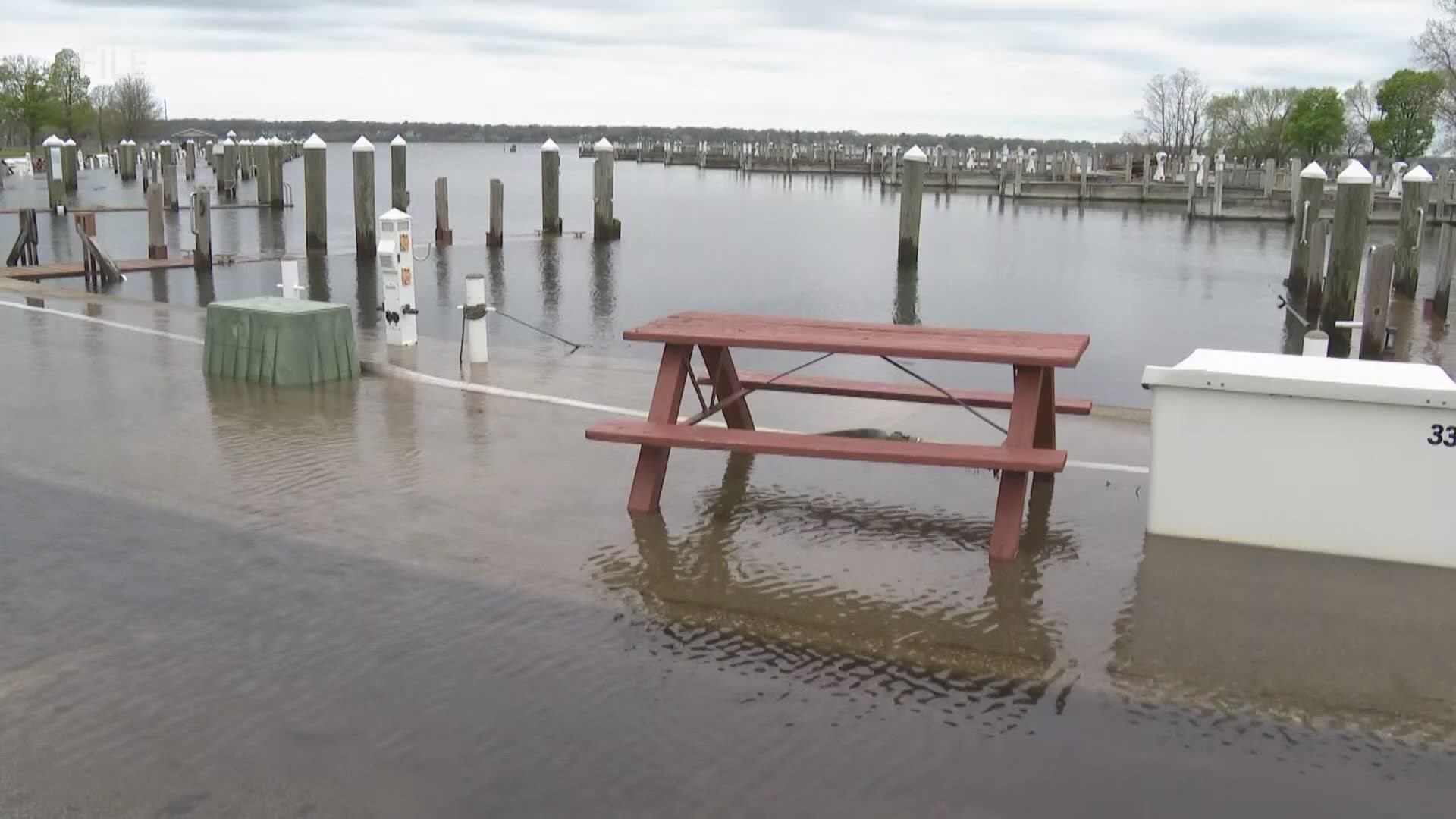NEW ERA, Mich. — It's amazing what can be discovered during a simple walk along the beach.
An Oceana County man, who was recently strolling along the Lake Michigan shoreline, found the remains of wartime history that had been buried under a dune for 63 years until the waves carved it out.
On Sunday, March 14, Jesse Cisneros did something he says he's done a thousand times - take a walk along the Lake Michigan shoreline. Cisneros grew up near New Era and has served on and off as the Claybanks Township Park Manager for several years.
"When I walk the beach, I usually walk on the south end of the Park," Cisneros said. "But on Sunday, I wanted to change things up so I walked along the north end."
As Cisneros was just about done with his walk, he saw what appeared to be a foundation of some sort laying on the side of a dune. As he got closer to the square-shaped pile of cinder blocks, he said he immediately knew what it was.
"It's a part of Camp Claybanks, which was a U.S. Army training installation base in Oceana County," Cisneros said. "It had been buried in that spot for over 60 years until the recent high water levels cut it free from the dune."


Camp Claybanks opened in 1953, just as the Korean War was ending. It was a massive base, consuming 434 acres of shoreline land, located just south of Claybanks Township Park. The camp was built to train nearly 3,000 Army personnel and reservists from Michigan, Illinois, Iowa and Indiana, to shoot anti-aircraft missiles, using remote control airplanes as targets.
The base had a launching pad where the planes would take off and fly out over Lake Michigan. Soldiers would use a variety of different range missiles to fire at the planes which, when hit, would fall from the sky and wind up at the bottom of the lake.
The firing range, which overlooked the lake and extended from the White Lake Channel to Little Point Sable, had positions for 16 guns up to 90 millimeters in size.
"A lot of the locals and most of the vacationers during that time hated the camp," Cisneros recalls. "My grandparents lived close by and I remember my grandma always complaining about her dishes rattling due to all the noise and gunfire."
Some residents also experienced the windows in their homes shattering because of the constant, loud thuds from the cannons, he added.
In February 1958, the Army closed the installation. The site was bulldozed.
"Some of the cement foundations can still be seen dotting the landscape where the camp used to be," said Cisneros. "And I still hear stories of missile and aircraft remnants washing up on the shoreline."
As for the portion of the camp Cisneros discovered, he says it was used as an observation post.


"I did talk with one veteran that said he remembers manning that post," said Cisneros. "Soldiers would stand on this post and be safe from the artillery."
Cisneros adds that he immediately contacted the Claybanks Township manager to make sure they knew about the discovery. The township is still in the process of deciding whether to remove the debris from the beach or leave it alone for Mother Nature to eventually re-bury.
"All these years I heard about this," Cisneros said. "The piece of history has finally been uncovered."
►Make it easy to keep up to date with more stories like this. Download the 13 ON YOUR SIDE app now.
Have a news tip? Email news@13onyourside.com, visit our Facebook page or Twitter. Subscribe to our YouTube channel.


